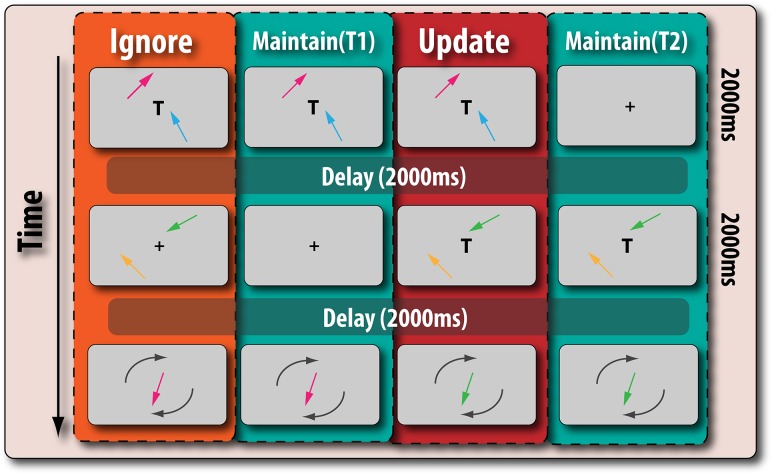Figure 2.
Two colored arrows with different orientations were presented for 2 s. In all 4 conditions, the resolution, or fidelity, of their recall was probed at the end with a colored arrow presented at screen center, which participants had to rotate so that it matched the target orientation. The trial types differed according to whether irrelevant information was presented and the time for which memoranda had to be retained. The trials were randomly intermixed. Participants were instructed to remember only the most recently presented pair of arrows that were shown with the letter “T”, which designated the potential target arrows. In the ignore condition (Far left), participants had to retain information whilst ignoring an irrelevant pair of arrows presented during maintenance—no “T” was presented when these distracters were shown. In contrast, in the update condition, participants were presented with 2 pairs of arrows consecutively, both of which were presented with the letter “T”. They had to remember the last pair of arrows, and discard the previous pair of arrows, which were now irrelevant. Two control conditions did not feature any irrelevant material but differed only in the length of time for which the information had to be retained. The maintain (T1) condition served as the temporal control for the ignore condition, whereas the maintain (T2) condition served as the temporal control for the update condition.

